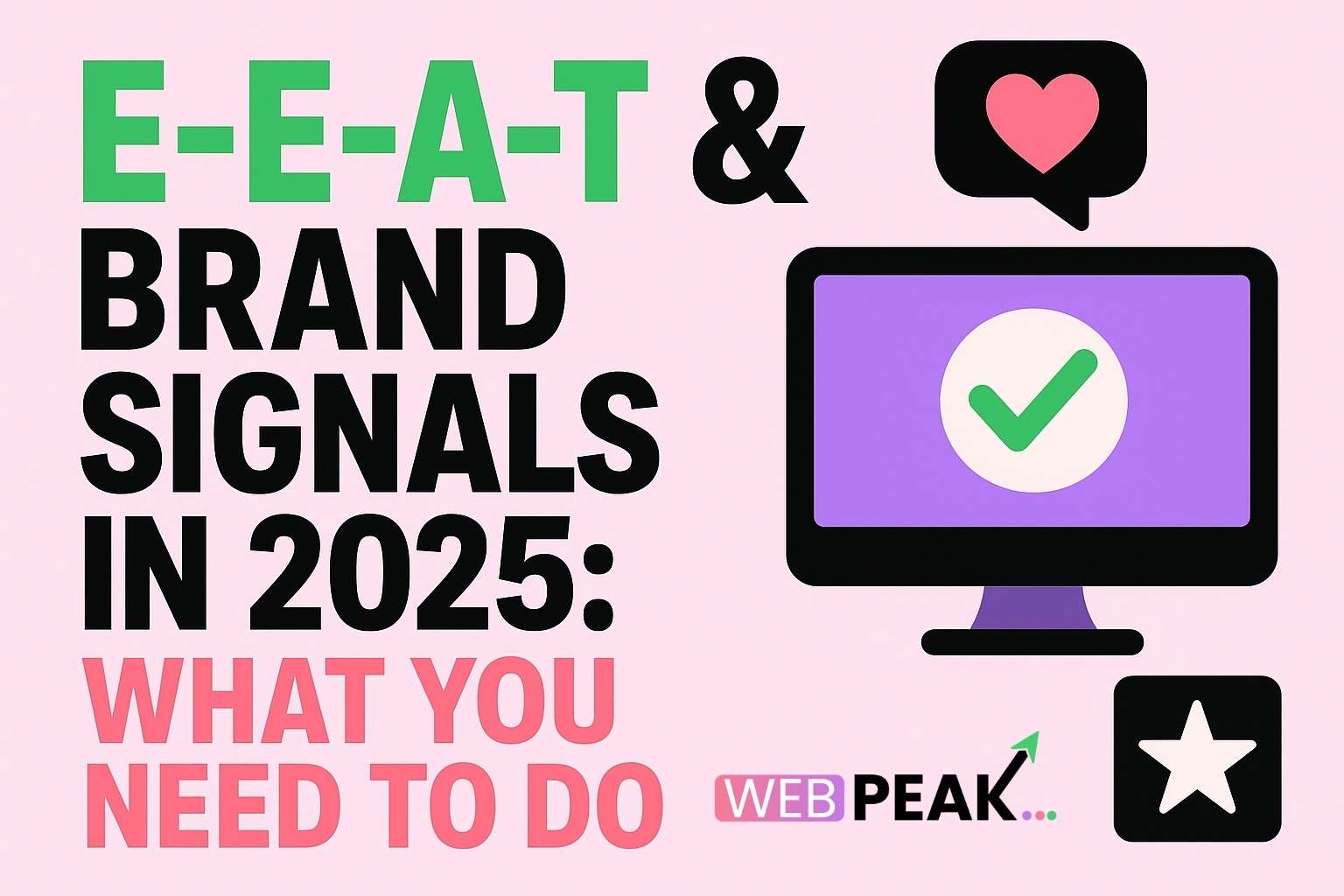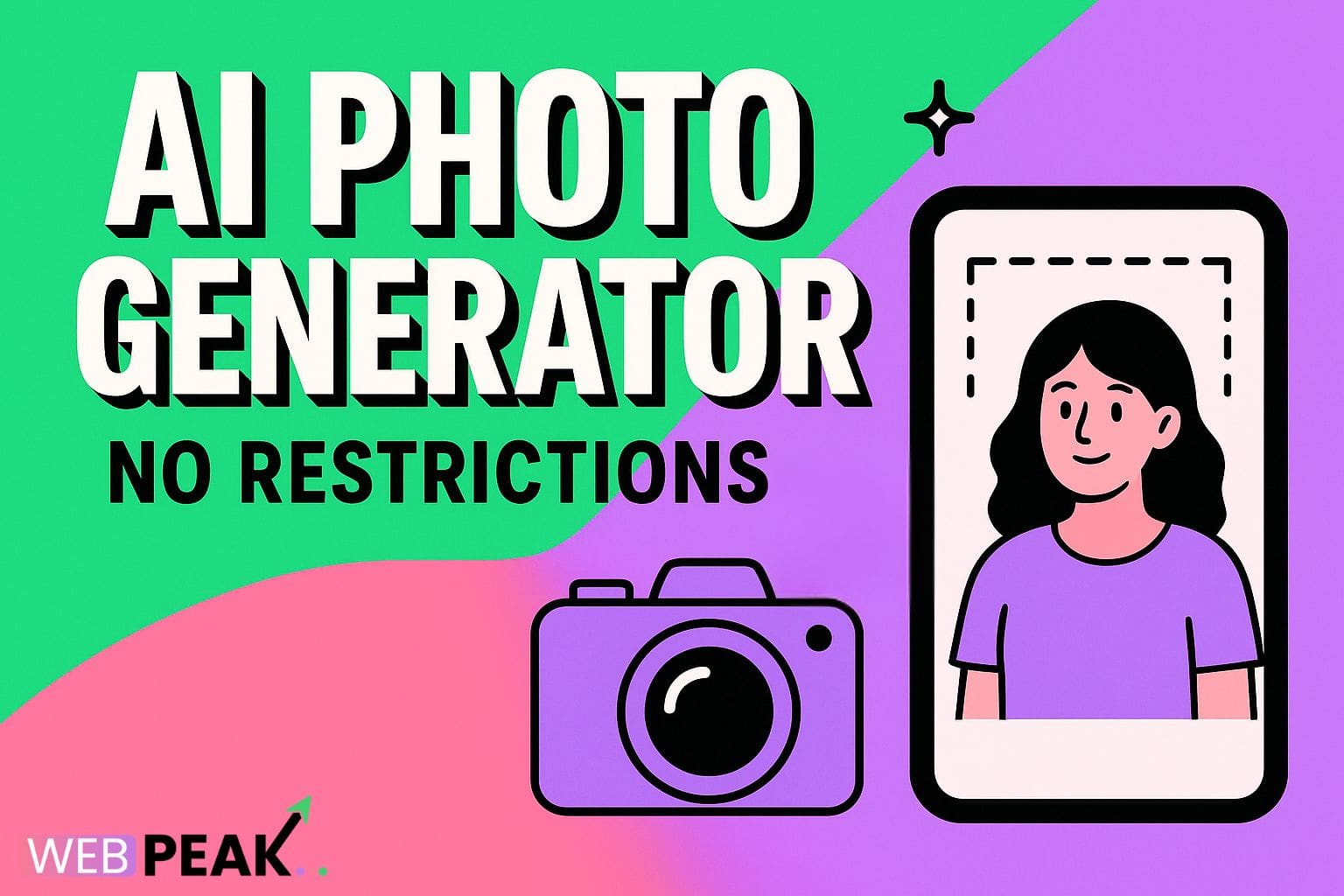E-E-A-T & Brand Signals in 2025: What You Need to Do
In 2025, mastering E-E-A-T and brand signals is no longer optional for digital success—it’s essential. This article covers exactly what you need to know about E-E-A-T & Brand Signals in 2025, why they matter, and how to take actionable steps to optimise your online presence.
What Is E-E-A-T? (Experience, Expertise, Authoritativeness & Trustworthiness)
The acronym E-E-A-T stands for Experience, Expertise, Authoritativeness and Trustworthiness. It is a framework used by search engines—primarily Google—to assess the quality of content, websites and brands.
Here’s a breakdown of each component:
- Experience: Does the author or brand have first-hand, real-world experience with the topic? (The newest “E” in the acronym.)
- Expertise: Does the content demonstrate a deep knowledge of the subject, often via credentials, training or recognised authority?
- Authoritativeness: Is the person or brand known in their field, cited by others, and considered a go-to source?
- Trustworthiness: Can users trust the site, brand and content? Are there transparent credentials, secure site setup, accurate data, and good user experience?}
Understanding E-E-A-T is foundational because it’s increasingly how Google and other search engines decide which content deserves to rank high.
The Rise of Brand Signals in 2025
Alongside E-E-A-T, brand signals have grown in importance—especially as search evolves with generative AI, zero-click results and entity-based indexing.
Brand signals refer to how your brand is perceived online and offline: consistent name usage, mentions, branded searches, social presence, authoritative backlinks, media mentions, and direct engagement with your audience. As companies move from purely keyword-centric SEO to brand-centric SEO, these signals help search engines understand that you’re a real, credible brand—not just another webpage. :
Why Brand Signals Matter Now
Here are some reasons brand signals matter in 2025:
- Search engines increasingly correlate branded search queries (e.g., “Brand X review”, “Brand X official”) with trust and authority.
- Generative AI and answer-engine optimisation mean that brands that get cited and linked frequently are more likely to appear as trusted sources.
- As zero-click and rich results become more common, being visible as a branded source helps your visibility even if users don’t always click through.
How E-E-A-T & Brand Signals Intersect
It’s not enough to just write great content or optimise for keywords—the most powerful strategy ties together both E-E-A-T and brand signals. In other words:
- Your brand voice and identity reinforce your authoritativeness and trustworthiness.
- Your content must demonstrate real experience and expertise, which builds your brand’s credibility.
- Brand signals (social mentions, branded search volume, press coverage) amplify your E-E-A-T credentials in the eyes of search engines.
In practice, a brand that invests in showcasing its team’s expertise, providing first-hand case studies, building media mentions and encouraging user reviews will perform better—both from an SEO standpoint and from a user-trust perspective.
Actionable SEO Checklist: E-E-A-T & Brand Signals for 2025
Here’s a practical checklist you can implement to align your website and brand with E-E-A-T and brand signal best practices:
1. Audit Author & Brand Credentials
- Create detailed author bios for any content creators: include credentials, work history, industry recognition, photo and links to other contributions.
- Publish a clear “About Us” page that includes your brand story, mission, team, years in business and social proof (awards, certifications, press mentions).
- Ensure your brand name, logo, and domain match across platforms and online directories to avoid confusion and establish consistency.
2. Demonstrate Real Experience in Your Content
- Incorporate case studies, project summaries, client stories, “behind-the-scenes” content that reflect real hands-on work.
- When applicable, include personal insights such as “how we turned around the campaign”, “lessons learned”, “challenges faced”—this helps Google favour experience signals.
- Use imagery, team photos, video walkthroughs or user-generated content to support the experience narrative.
3. Build Authoritativeness & Brand Signals
- Earn high-quality backlinks from industry authorities and publications—guest posts, expert round-ups, research partnerships.
- Encourage brand mentions (with or without links)—media coverage, podcasts, social platforms, events. These build brand entity strength.
- Track and grow branded search queries (e.g., search volume for “YourBrand + product” or “YourBrand + service”)—this signals awareness and brand dominance.
4. Ensure Trustworthiness & Technical Foundations
- Use HTTPS, fast page speeds, mobile-friendly design, structured data markup (especially for articles, reviews, FAQs).
- Publish transparent privacy policy, terms of service, contact information, and clear author disclosure where needed.
- Include citations and external references for factual claims; date your content and maintain “last updated” stamps for evergreen content.
- Monitor user experience signals: bounce rate, click-through, dwell time—these indirectly feed into brand trust and content quality signals.
5. Operationalise Content Strategy for 2025 & Beyond
- Identify content gaps where you can showcase your real experience rather than generic summaries.
- Repurpose high-value content across platforms (video, webinar, infographic) to maximise brand reach and signal strength.
- Update older content periodically—especially where data, technology, or best practices have changed.}
- Track not just rankings and traffic, but branded metrics (mentions, brand search volume, share of voice) and adjust strategy accordingly.
6. Monitor and Amplify Brand Signals
- Use brand-monitoring tools to see when you are mentioned, linked or referenced across the web. Increase these occurrences intentionally via PR, influencer outreach or collaborations.
- Encourage customer reviews, testimonials, case-studies—especially on external platforms such as Google My Business, Trustpilot, industry directories.
- Create a named entity presence for your brand—consider structured data (Organization or LocalBusiness markup) and consistent NAP (Name-Address-Phone) information on your website and directories.
How to Measure Success of Your E-E-A-T & Brand Signal Efforts
To understand if your efforts are working, consider these key performance indicators (KPIs):
- Increase in branded search queries (volume of “YourBrand + keyword” searches).
- Improvement in organic rankings for key topics where you aim to show expertise and authority.
- Growth in high-quality backlinks and brand mentions from trusted domains.
- User engagement metrics: longer dwell time, lower bounce, higher conversion from content pages.
- SERP visibility in rich results, featured snippets or AI-overview panels—these often reward high E-E-A-T and brand signal pages.
Common Pitfalls to Avoid
Even the best brands can stumble when it comes to E-E-A-T and brand signals. Be aware of these mistakes:
- Publishing generic content without real experience or expertise behind it—this weakens the “E” of Experience.
- Ignoring brand consistency—different names, inconsistent branding or conflicting information across platforms damages trust.
- Acquiring low-quality or irrelevant backlinks purely for SEO—this may harm authoritativeness rather than help.
- Failing to maintain or refresh content—stale or outdated pages degrade trustworthiness and may lose rankings. :c
- Neglecting the full user experience (UX)—good content alone isn’t enough if the site is slow, insecure or confusing.
Why Partnering with a Full-Service Digital Marketing Company Makes Sense
Aligning your brand with high E-E-A-T and strong brand signals is intensive. From content strategy to technical optimisation, to brand outreach and PR—co-ordinated work across multiple disciplines is required.
If you’re looking for a partner that can handle web development, digital marketing, and SEO under one roof, you might consider WEBPEAK, a full-service digital marketing company offering those services and more.
FAQ: E-E-A-T & Brand Signals in 2025
Q1. What does E-E-A-T stand for in SEO?
It stands for Experience, Expertise, Authoritativeness and Trustworthiness—the four pillars that search engines use to evaluate content and brand quality.
Q2. Is E-E-A-T a direct ranking factor?
Not in the sense of a single numeric value you can tweak—but it informs many signals. For example, search engines look at author credentials, brand trust, content experience and engagement to infer E-E-A-T.
Q3. How do brand signals influence SEO in 2025?
Brand signals—like branded search volume, media mentions, high-quality backlinks, and named entity recognition—help search engines recognise your brand as credible. In 2025, as search becomes more entity- and AI-driven, these signals are increasingly important.
Q4. Can small or local businesses benefit from E-E-A-T and brand signals?
Absolutely. Even local businesses can showcase their experience (e.g., community case studies), emphasise expertise (certified staff), build brand signal via local citations, reviews and NAP consistency. The key is authenticity and consistency rather than having a huge national brand.
Q5. How often should content be updated to maintain trustworthiness?
There’s no fixed interval, but for evergreen content you should revisit at least every 6-12 months, or sooner if the subject evolves quickly (e.g., legal, tech, health). Including a “last updated” date and periodically refreshing adds to trust signals.
Final Thoughts
In 2025, focusing on keywords and links alone is no longer enough. To thrive you must build real experience, demonstrate expertise, establish authoritativeness, and earn trust—while also strengthening your brand signals across the digital ecosystem. Combine the E-E-A-T framework and brand signals into one unified strategy and you’ll be far better positioned to win visibility, clicks and conversions.
Start today with the checklist above, review your content and brand presence, and adjust your strategy to meet the evolving demands of search engines and users alike.





